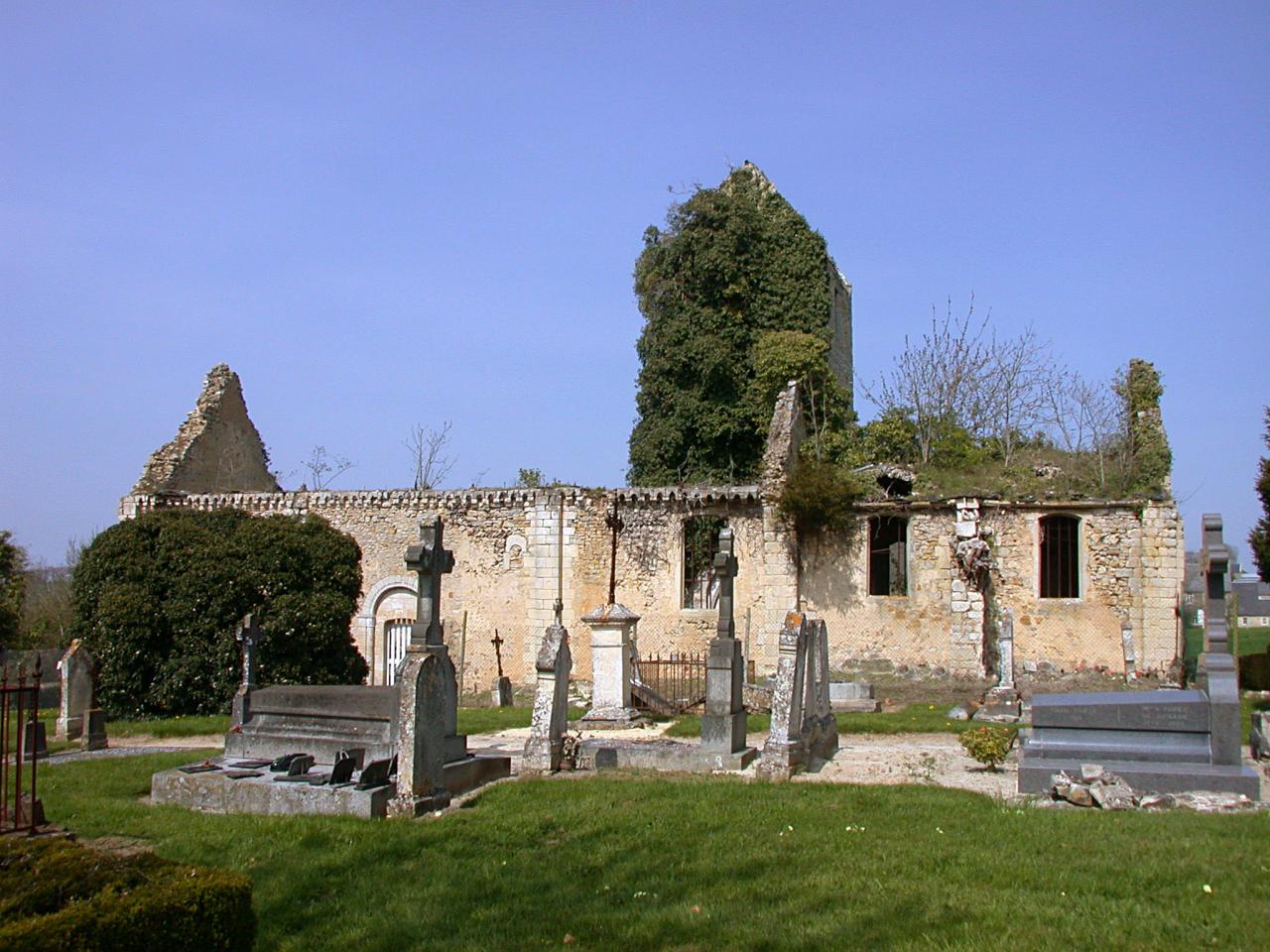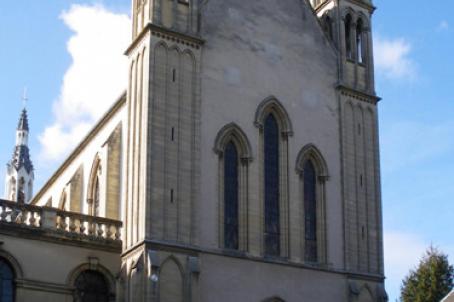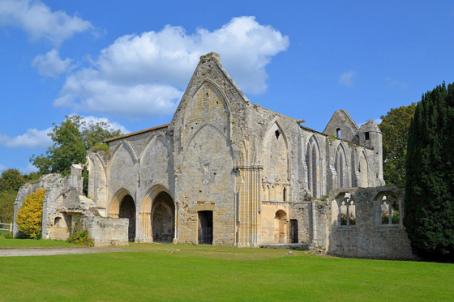Saint-Aubin de Bernières
The church Saint Aubin Bernières was built in the mid-twelfth to early thirteenth century. The single nave, separated from the vaulted choir by a triumphal arch, has preserved its ancient openings and Romanesque entrance. In the 14th or 15th century, a square bell tower was added as well as a sacristy. The church St Aubin was abandoned in 1805 for the benefit of the abbey church of Mondaye.
About this building
The Saint Aubin de Bernières church was built foundations of an older church in the mid-12th and early 13th centuries. The single nave, separated from the vaulted choir by a triumphal arch, retains its ancient openings and Romanesque entrance. In the fourteenth or fifteenth century, a square bell tower was added on the north side of the nave, while a sacristy was adjoined to the north of the choir.
The parish of Bernières-Bocage was suppressed during the Revolution, and the church of St Aubin was decommissioned and abandoned in 1805 in favour of the abbey church of Mondaye.
The church, subject to many restorations, still presents the triumphal arch that separates the choir and the nave and the ogival supports of the 12th century vaults. The capitals of the columns and culottes have décor characteristic of this period, while under the northern cornice, we can see modillions. The village near the church was renowned for the treatment of eye diseases.






